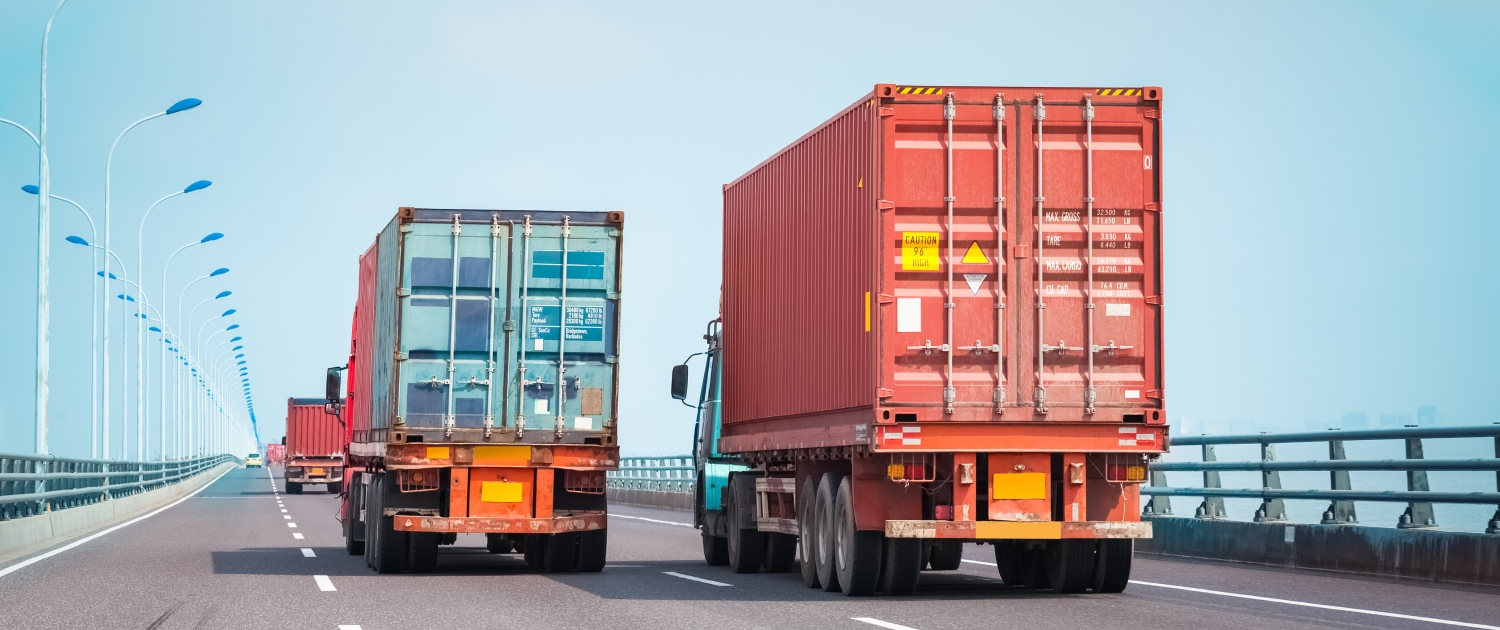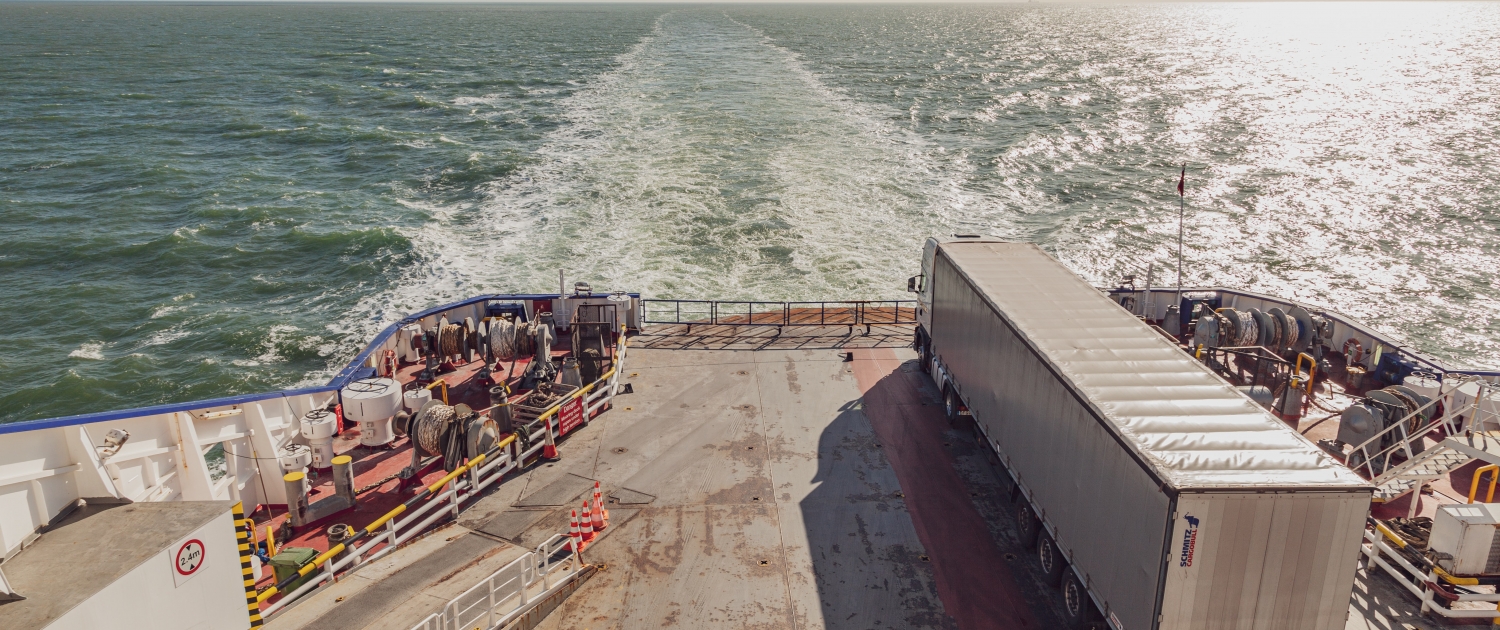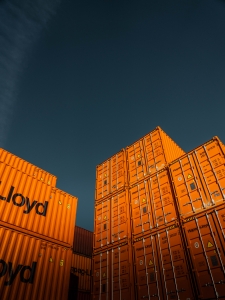
It’s no exaggeration to say that the commercial trucking industry is the backbone of our economy. With over 73% of total freight value in the US transported by trucks, CDL drivers play an essential role in keeping goods flowing across the nation.
CDL drivers also are important to the global production and exchange of goods, especially through the role of intermodal trucking. Intermodal truckers transport freight that requires more than one form of transportation, such as rail, air, or over the ocean, during the first and last segment of the freight’s journey.
Wondering if this important trucking job could be the right career fit? Keep reading to find out what to expect as an intermodal driver, including the benefits, challenges, and daily routine.
What do Intermodal Drivers Do?
Intermodal freight transport is the term for the overall process required to move a shipment that involves more than one mode of transportation. There are four modes involved in intermodal transportation of goods – ship to rail, air to rail, rail to ship, and road to rail. These short hauls are also referred to as drayage. Intermodal trucking is an essential part of the process when the shipment is transported by truck from one intermodal terminal, such as a port or rail yard, to the next destination.
Because the shipments are stored in specialty modular containers throughout the entire process, intermodal trucking differs from other forms of trucking in that drivers never have to load or repack the actual goods.
Intermodal truck drivers begin the day by arriving at the first destination, usually a rail yard, port, or distribution center, to pick up the modular container. Drivers then load these shipments onto their intermodal container chassis, which is specifically designed to safely and securely carry intermodal freight.
After ensuring the freight is secure, drivers bring the containers to the next destination, which could be a warehouse, distribution center, or other transportation hub. At this final destination, drivers carefully unload the modular containers for further handling or storage, and potentially pick up new freight for the next trip.
Intermodal truck drivers can work for a range of companies, varying from large carriers to small carriers that focus on a single market. Regardless of size and scope, the most important factor is that drivers are operating near major rail yards or ports.
What are the Benefits?
For CDL drivers searching for a position that offers a predictable schedule, consistent pay, and benefits, and is always in demand, intermodal trucking might be the right solution. These are some of the benefits of a career in intermodal freight transportation.
- Steady schedule and less time away from home. Intermodal drivers often have more predictable schedules compared to long-haul truckers. You’ll spend fewer hours on the road and more time at home.
- No direct contact with freight. Unlike with most CDL jobs, intermodal freight remains in specialty containers throughout the entire transportation process. This means intermodal drivers spend less time loading and unloading, and the chances of damage and safety risks are greatly decreased.
- Opportunities for specialized training and career advancement. Some intermodal companies provide specialized training in areas such as container handling, safety procedures, and hazardous materials handling, enhancing drivers’ skill sets and making them more competitive in the job market.
Are There Any Challenges?
However, like any career, it is essential to consider the drawbacks as well as the benefits.
- Limited routes and potential delays. Intermodal routes are specific to rail and port locations, so you won’t have the same flexibility as long-haul truckers. Transportation hubs are also prone to delays and backups, which can lead to frustrating logistical challenges and potentially wasted time.
- Equipment challenges. Intermodal containers require specialized equipment, such as the chassis and twist locks, which can be challenging to learn and manage. Drivers may also encounter restrictions on the types of freight they can haul and the routes they can take due to equipment limitations or regulatory requirements.
- Physical demands. Although arguably requiring less lifting and moving than other trucking positions, the job can be somewhat physically demanding even with the assistance of specialized equipment.
- Additional requirements. Drivers that will be accessing ports, must obtain a Transportation Workers Identity Card (TWIC) and a Port ID which is required by all ports within the United States. Drivers that need access to airports to deliver or pick up freight will also need to obtain a TSA card. While obtaining these additional endorsements can take between 10 – 60 days and cost nearly $130, having them will create more opportunities for the driver to haul different types of freight and earn more.
Intermodal truck driving is an important CDL job that offers a flexible schedule and unique training for drivers of all experience levels.
Looking for more information on potential jobs and new trends in the trucking industry? Be sure to check out more posts on our blog and follow us on social media!

 Intermodal trucking can be a great option for truck drivers who are looking for a new job over the road and want to try something different than typical dry and reefer hauling. Here are 3 perks of being an intermodal trucker, along with quotes from actual intermodal drivers about what the job is like.
Intermodal trucking can be a great option for truck drivers who are looking for a new job over the road and want to try something different than typical dry and reefer hauling. Here are 3 perks of being an intermodal trucker, along with quotes from actual intermodal drivers about what the job is like. If consistent home time and a healthy work/life balance are important to you, intermodal trucking might be a good choice for your next driving job. Drivers will tell you that the biggest benefit of this line of work is the consistent schedule and shorter routes. Drivers will usually complete at least one route, (most times more) in a single shift and be home every night.
If consistent home time and a healthy work/life balance are important to you, intermodal trucking might be a good choice for your next driving job. Drivers will tell you that the biggest benefit of this line of work is the consistent schedule and shorter routes. Drivers will usually complete at least one route, (most times more) in a single shift and be home every night. The shipping containers that intermodal truckers haul move from transport vehicle to transport vehicle without being unpacked or broken down (With the exception of inspections by customs officials). They stay packed as is and sealed from the time they leave, until they get to their destination.
The shipping containers that intermodal truckers haul move from transport vehicle to transport vehicle without being unpacked or broken down (With the exception of inspections by customs officials). They stay packed as is and sealed from the time they leave, until they get to their destination. Most intermodal drivers find the real perk of the job to be the flexibility that it provides them. We talked to another intermodal truck driver, Ritsuko, and she shared what she loves about intermodal trucking, including seeing the country and making money.
Most intermodal drivers find the real perk of the job to be the flexibility that it provides them. We talked to another intermodal truck driver, Ritsuko, and she shared what she loves about intermodal trucking, including seeing the country and making money.





